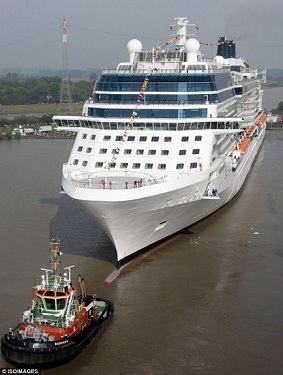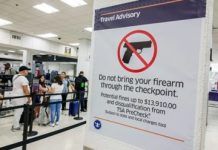While the aviation industry has implemented strict security screening regulations, cruise ship security screening remains relatively soft in comparison. According to IHS Research, this is expected to change as the United States Coast Guard looks to increase screening requirements for passengers and their baggage in 2015.
The US Coast Guard recently announced plans to standardise passenger security screening procedures at cruise ship terminals throughout the United States with the creation of the Terminal Screening Program (TSP). Based on US Coast Guard figures, there are currently 137 regulated cruise ship terminals, operated by 23 cruise line companies in the United States. IHS found that the proposed regulations are not mandatory, resulting in projected slow uptake of new explosives, weapons and contraband (EWC) detection equipment in the cruise ship industry, over the short-term.
In IHS’ recently published report on the explosives, weapons and contraband detection equipment market the seaports market is forecast to grow by a CAGR of 6.7% to $241.6 million in 2018. Currently many cruise ship terminals use a combination of x-ray, people screening, explosives detection systems (EDS), canine teams, and manual inspections. Larger cruise ship terminals are expected to prefer the efficiency and greater throughput that newer x-ray and EDS equipment offers, while smaller cruise ship terminals will be slower to adopt new EWC equipment, preferring instead to use a combination of canine teams, manual inspections, and existing EWC detection equipment.
The TSP is expected to increase security at cruise ship terminals by developing a standardised list of prohibited items, including developing training standards to consolidate requirements for screeners and eliminate redundancies in cruise ship security regulations and requiring the screening of all passenger, crew, and visitors’ baggage and personal items.
IHS found that the TSP does not require cruise ship terminals to purchase EWC detection equipment; however, those that do will be required to purchase equipment with similar detection capabilities to those installed at airports. EWC detection equipment for use in airports typically carries a higher purchase price due to the increased capability of this equipment resulting from strict detection standards. IHS expects the long-term impact of the TSP to be positive, as cruise ship terminals in the United States replace older equipment with newer, more advanced EWC detection equipment. However, IHS does not expect the TSP to generate a spike in growth over the short-term. Instead, normal replacement cycles are expected for most of the cruise ship industry over the next 12 – 24 months.








